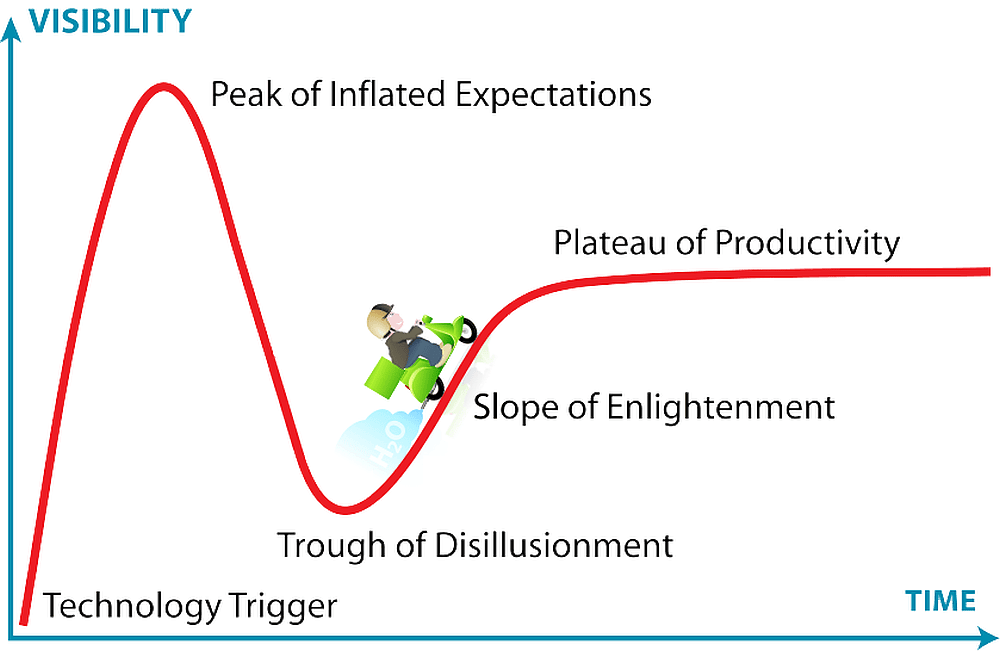In a familiar occurrence, the United States fiscal year 2023 began with most science programs operating on stopgap funding that extends previous budget levels until Congress passes appropriations legislation for the full year.
However, unlike the last fiscal year, looming over budget negotiations is the CHIPS and Science Act, which sets budget targets for the National Science Foundation, Department of Energy Office of Science, and National Institute of Standards and Technology. These budget targets, which have bipartisan buy-in, are much higher than the current proposed appropriations. Congressional leaders have offered few hints as to whether they will press to meet the targets quickly, defer any increases to fiscal year 2024, or even abandon the targets altogether.
Several programs outlined in the CHIPS and Science Act are not dependent on the appropriations process because they were funded through other pathways, namely the Infrastructure Investment and Jobs Act, Inflation Reduction Act, and the semiconductor provisions of the CHIPS and Science Act.
A few highlights from the proposals:

*Data from the American Institute of Physics FYI “Federal Science Budget Tracker.” Table created by The American Ceramic Society.
Department of Defense
Following a string of budget increases, funding across the Department of Defense’s research, development, test, and evaluation (RDT&E) accounts increased 11% in fiscal year 2022 to a new record of nearly $123 billion. That is nearly $50 billion more than those accounts stood just five years earlier.
For fiscal year 2023, the House and Senate proposed increases of 10% and 12%, respectively, for the RDT&E budget. However, appropriators split ways in their proposals for funding the Department of Defense’s Science and Technology portfolio under RDT&E, with the House proposing a 3% cut and the Senate a 9% increase.
National Science Foundation
While House appropriators propose increasing the current $8.8 billion budget of the National Science Foundation by 9%, Senate appropriators propose a 17% increase to $10.3 billion, nearly matching the 19% increase requested by the White House.
A significant fraction of the budget would go toward funding NSF’s newest directorate, the Directorate for Technology, Innovation, and Partnerships (TIP), which was officially established in March 2022. The White House seeks $880 million for the TIP Directorate in fiscal year 2023, with roughly 40% of the total coming from existing programs transferred into the directorate.
Department of Energy
The White House requested to increase DOE’s budget from $44.9 billion to $48.2 billion. Both the House and Senate proposals are in line with the request, with recommended increases bringing the total budget to $48.2 billion and $49.3 billion, respectively.
Office of Science
House and Senate appropriators propose raising the DOE Office of Science budget 7% and 8%, respectively, to $8.0 billion and $8.1 billion. These proposals are notably above the White House request to increase the budget by 4% to $7.8 billion, which supporters in Congress say fall short of the targets laid out in the CHIPS and Science Act. The Office of Science already received an influx of more than $1.5 billion from the Inflation Reduction Act for labs that it oversees.
Applied energy
Like last year, the White House again requests large increases for some applied energy programs, especially those in the Office of Energy Efficiency and Renewable Energy (increase of 54%). However, unlike last year, the White House also seeks a major expansion of the Advanced Research Projects Agency–Energy and proposes that it house efforts previously envisioned for a separate climate-oriented ARPA, which Congress ultimately declined to create. The White House and Congress both seek to significantly increase the budget of the new Office of Clean Energy Demonstrations, which was launched in December 2021 to support a burgeoning portfolio of large-scale technology projects funded by the Infrastructure Investment and Jobs Act.
National Nuclear Security Administration
The NNSA budget would slightly increase from the current $20.7 billion under the various spending proposals for fiscal year 2023, with the White House and House proposing increases to just over $21 billion and the Senate proposing an increase to $22.1 billion. A goal for the White House is to restore the Stockpile Responsiveness Program’s budget to $69 million. This program, which focuses on maintenance of warheads rather than design and production, was cut from $70 million to $50 million in fiscal year 2022.
National Institute of Standards and Technology
House and Senate appropriators propose increasing the $1.2 billion annual budget of the National Institute of Standards and Technology by 20% and 38%, respectively. The increases are in addition to billions of dollars for semiconductor R&D funded through the CHIPS and Science Act, which will be provided over several years as a mandatory appropriation outside of the annual budget process.
During fiscal year 2022, Congress brought back earmarks after a decade-long moratorium. This change resulted in NIST’s budget becoming a repository for earmarked projects unrelated to the agency’s mission, creating an apparent increase that actually left funding almost flat for its core activities. NIST will likely absorb further earmarks in fiscal year 2023, but the proposed budgets would leave core programs with a sizeable increase.
National Aeronautics and Space Administration
House and Senate proposals for NASA’s fiscal year 2023 science budget are in near agreement with the White House’s proposal to increase the budget from $7.61 billion to $7.99 billion.
Among science agencies, the picture for NASA’s budget is relatively straightforward. However, there is some question about whether Congress will follow the White House’s plan to control the multiyear expansion of NASA’s planetary science program. The White House proposed delaying the Near Earth Object Surveyor mission, but asteroid detection has strong support in Congress and increased salience in view of NASA’s recent successful mission to alter the dynamics of a double-asteroid system.
National Institutes of Health
Senate appropriators propose a 4% increase to $47.96 billion for the National Institutes of Health while the House proposes an even larger boost of 9% to $50.21 billion.
While the House and Senate proposals are relatively in line with the White House, they diverge regarding the recently established Advanced Research Projects Agency for Health (ARPA–H). In fiscal year 2022, House and Senate appropriators initially put forward spending proposals that made funding for ARPA–H contingent on Congress passing separate legislation establishing the agency. While several such bills were introduced, none were passed by either chamber. So, Congress ultimately provided a smaller sum of $1 billion to get ARPA–H started as debate continues over authorization.
One sticking point is whether to establish ARPA–H within NIH or as an independent agency in the Department of Health and Human Services (HHS). The White House strongly advocates housing ARPA–H within NIH to take advantage of NIH’s administrative capacity, but some members of Congress and other advocates argue that administrative independence is necessary to fostering a distinctive culture of risk-taking innovation.
In its appropriation, Congress skirted the issue by granting HHS authority to transfer ARPA–H funds to NIH or another agency within the department. On March 31, 2022, HHS secretary Xavier Becerra announced he would transfer the funds to NIH but that the ARPA–H director will report directly to him.
For more information on the federal budget, visit the American Institute of Physics FYI “Budget Tracker” at https://www.aip.org/fyi/federal-science-budget-tracker.
Author
By Lisa McDonald
CTT Categories
- Market Insights

